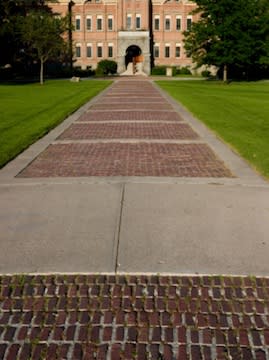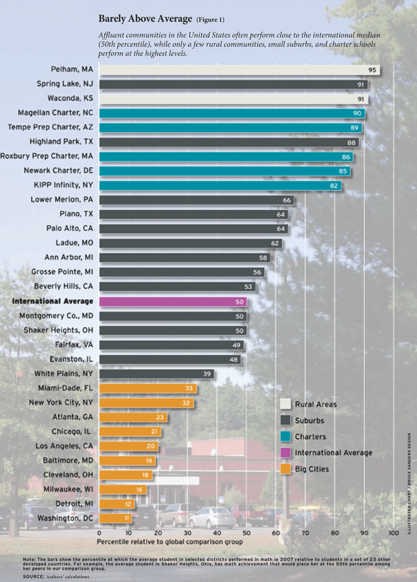 The Lookout
The LookoutEven rich school districts do poorly on international math tests

Only 6 percent of all school districts in the United States significantly outperform students in the developed world on math tests, according to "When the Best Is Mediocre," a new report from the journal Education Next.
Even students who attend ritzy school districts that are considered high-performing wouldn't pass muster in a global mathalon, the report found. Students in Beverly Hills--where the average household income is more than $100,000--score at about the 50th percentile internationally. "If Beverly Hills were relocated to Canada, it would be at the 46th percentile in math achievement, a below-average district," the authors write. "If the city were in Singapore, the average student in Beverly Hills would only be at the 34th percentile in math performance."
The authors say that the global comparison is important because Americans are increasingly competing for jobs with workers from all around the world. "If Beverly Hills graduates are to have the kinds of jobs and lifestyles that their parents hope for them, they will have to compete with students from Canada, Singapore, and everywhere else," they write. The report also calls out Shaker Heights, Ohio, and Fairfax, Virginia, for performing in the middle of the international pack in math.
In all, about 68 percent of American school districts perform below the international average in math.
A handful of districts--many of them in college towns--do well compared to the global competition. The average student in Pelham, Massachusetts, performs better than 95 percent of students in the developed world. Pelham is a small district and home to Amherst College.
Spring Lake, New Jersey, and the Waconda school district in central Kansas were not far behind in math achievement.
Many of the highest performing districts were individual charter schools, which some states treat as separate districts.
The researchers compared 2007 standardized test scores to the average math test scores in 25 developed countries. You can find out how your own school district stacks up in this interactive map.

(Via Joanne Jacobs)
